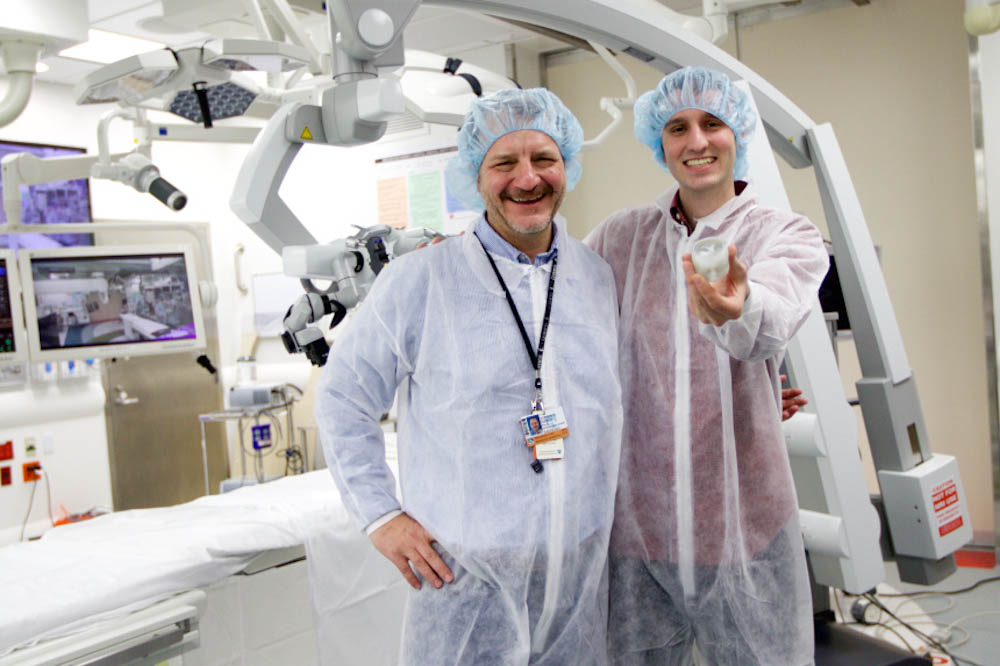This post originally appeared on HealthHub, a blog from Brigham and Women’s Hospital.
Interested in seeing images of his brain, Steven Keating, currently a graduate student at the MIT Media Lab, volunteered for a research study while attending school in Canada in 2007. When researchers returned his brain scans, they delivered some startling news.
“The researchers told me I had an abnormality near the smell center in my brain, but that lots of people have abnormalities and I shouldn’t be alarmed,” says Steven. However, as a precaution, researchers advised Steven to get his brain re-scanned in a few years.

Steven’s next set of brain scans, performed in 2010, showed no changes. But in July 2014, he started smelling a strange vinegar scent for about 30 seconds each day. He immediately had his brain scanned and learned that the strange smell was associated with small seizures due to the presence of a brain tumor called a glioma. Steven’s glioma had grown to the size of a baseball.
Steven met with E. Antonio Chiocca, MD, PhD, chair of the Department of Neurosurgery at Brigham and Women’s Hospital (BWH), who performed image-guided brain surgery on Steven last summer in BWH’s Advanced Multimodality Image Guided Operating (AMIGO) suite.
Since his surgery, Steven has gone through rounds of proton radiation and chemotherapy. He began another round of chemotherapy at Dana-Farber Cancer Institute in February 2015. Steven says he is extremely grateful for his care team, including Chiocca; Patrick Wen, MD, director of the Center for Neuro-Oncology at Dana-Farber/Brigham and Women’s Cancer Center; Keith Ligon, MD, PhD, a neuropathologist at Dana-Farber/Brigham and Women’s; and Helen Alice Shih, MD, associate medical director of the Francis H. Burr Proton Therapy Center at Massachusetts General Hospital.
Read more:
Ever curious, Steven asked to have his surgery videotaped and his genome sequenced, and this information was used to print 3-D models of his brain and tumor. He also has been working with Chiocca and others on 3-D printing research and has given various talks and presentations about his work and his patient experience. Most recently, Steven was invited to the White House for discussions on the importance of allowing patients to have access to their health data.
Chiocca said it has been wonderful working with Steven, both as a patient and researcher. While it’s pretty rare that patients ask for their surgery to be filmed, he said it is valuable for them to participate in the research side of their care when possible.
“It is very easy for a patient to become depressed by their disease,” says Chiocca. “But Steven’s approach of being actively involved to raise consciousness and funding for more research for this type of tumor is remarkable. I’m just so proud to have been involved in his care.”
